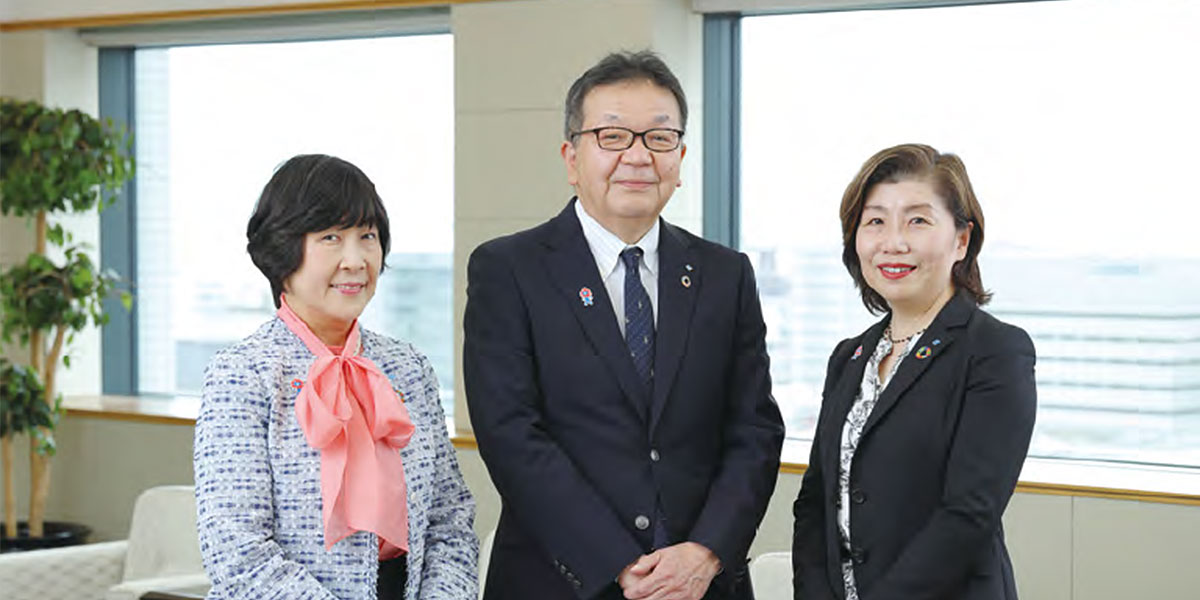
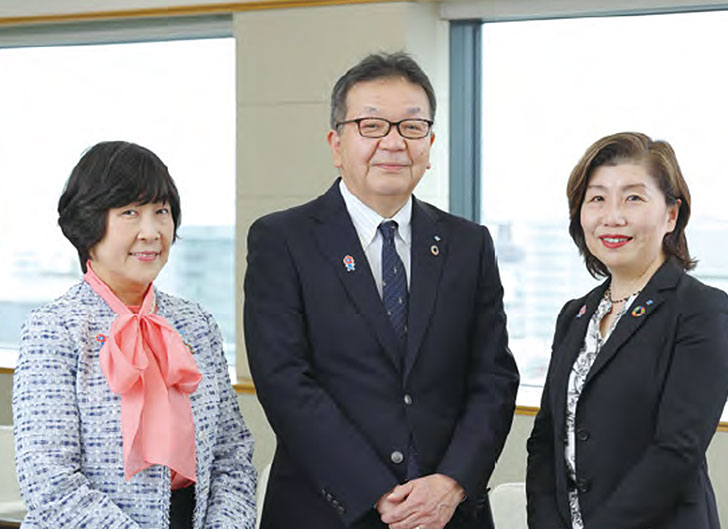
Sumitomo Rubber Group’s Challenges and Progress from the Perspective of Its Outside Directors
Fudaba
In fiscal 2024, the Board of Directors made two major decisions. One was the closure of our tire plant in the U.S., and the other was the acquisition of the DUNLOP trademark rights and related assets. In both cases, we did not limit ourselves to a single option but engaged in open discussions. From the depth and frequency of the discussions to the decision-making process itself, I believe each matter was thoroughly examined from all relevant perspectives.
Sonoda
Regarding the U.S. tire plant, closure was not a foregone conclusion. A wide range of options was carefully considered, and senior management from the Head Office were stationed locally to lead thorough reform efforts. The process included discussions on improving productivity, boosting employee motivation, digitizing manufacturing processes, and evaluating potential outcomes in the event of closure. Some of these discussions were conducted online between the Head Office and the U.S. plant. I believe that the sincere and committed efforts to improve the local plant played an important role in gaining the understanding of stakeholders when the final decision to close the plant was made.
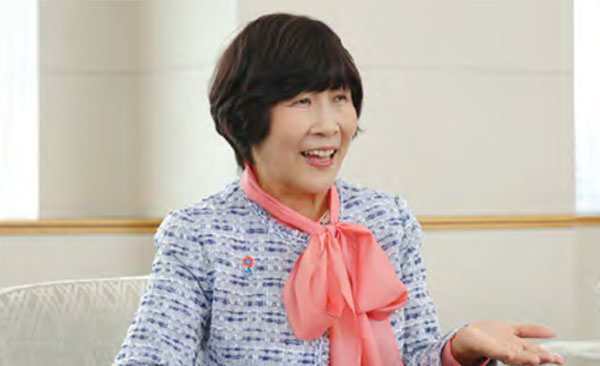
Fudaba
Acquiring the DUNLOP trademark rights and related assets was a long-standing aspiration for the Company. However, we carefully and repeatedly discussed whether it was truly the right move to make. There were even moments when we determined that, if the terms were not acceptable, it would be appropriate to walk away from the negotiating table. In the end, I would say the deal reflects the outcome of a thoughtful and well-structured process.
Sonoda
The proposal to acquire the trademark rights did not begin with a predetermined assumption that we must acquire them. Instead, we engaged in multifaceted discussions, asking questions such as “What would it take to acquire them?”, “What if we do acquire them?”, and “What would the business look like without acquiring them?” Information was shared repeatedly, not only during Board meetings but also through off-site meetings. We examined various projections in pursuit of the best answer, and the decision was the result of those thorough deliberations.
Motojima
During my first year in the role, I felt a tense atmosphere as two bold initiatives moved forward simultaneously. I believe that the off-site meetings and the pre-briefings held on the day of the Board meetings serve not merely as sessions for individual explanations, but as valuable opportunities where all members come together for open and substantive discussions. There were times during this process when outside directors offered candid input, even urging a change in direction. Thanks to prior information sharing, the Board has been able to engage in deep, meaningful discussions, enabling well-informed decisions to be made within a limited timeframe.
Fudaba
As the major matters mentioned earlier have progressed, it is clear that President Yamamoto is the one most deeply contemplating and concerned about the future of the Sumitomo Rubber Group. One aspect of his leadership style is that he deliberately sets up meetings where he does not participate, in order to encourage open and active discussions among Directors and Executive Officers. At the same time, he devotes significant time to engaging directly with employees. His leadership is clearly reflected in the way he listens closely to voices from within the Company, especially from the front lines, while guiding the organization forward.
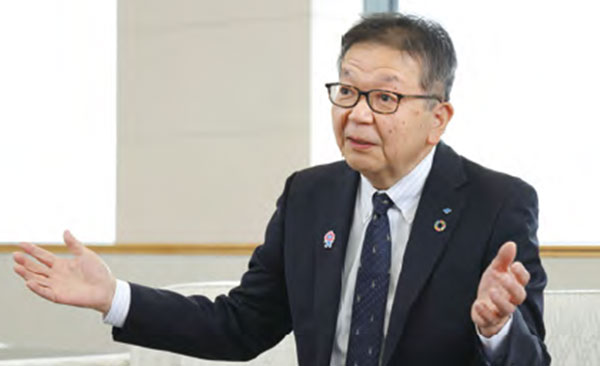
Sonoda
The first time I truly felt President Yamamoto’s leadership was during the BTC (Be the Change) Project*1, which aimed to reinforce our foundation for profitability. At a time when the Company was facing significant financial challenges, every effort was made to improve profitability. Under the President’s direct leadership, all employees took a bottom-up approach to thoroughly reevaluate business processes from scratch, and the project delivered significant results. I think that this experience played a key role in shaping the President’s ability to make the kind of major decisions we are now facing.
*1“Be the Change” Project – A transformative project led directly by the president that was launched in 2020. It aims to enhance organizational culture and strengthen foundations for profitability.
Motojima
At key moments during Board meetings, President Yamamoto takes the opportunity to explain the background and intent of agenda items, and to express his enthusiasm and commitment. His remarks do not dominate the discussions; rather, they strike a wellmeasured balance, which I find very appropriate. Last year, I had the opportunity to attend an in-house awards ceremony related to sustainability. I witnessed firsthand how President Yamamoto attentively engages with employees and expresses sincere appreciation for their efforts. Through moments like these, I could truly sense how he fosters effective communication within the Company.
Sonoda
As the diversity of the Board of Directors has increased, the perspectives brought to discussions have also become more varied. There were moments when I sensed that employees, too, recognized that new ways of thinking, different from traditional approaches, were embraced within the Company.
Motojima
In my opinion, the composition of the Board of Directors and the skills required of its members vary depending on the Company’s stage of development—there is no one-size-fits-all model. It would be ideal if we could engage in discussions about the future structure of the Board while keeping in mind the direction we want the Company to take over the next 10 years.
Fudaba
Since 2023, the Chair of the Board of Directors has been an Outside Director. In general, internal Directors tend to become more reserved during Board discussions, but the previous Chair managed that dynamic skillfully. Whenever discussions stalled or became unfocused, the Chair calmly helped clarify what needed to be done, by when, and how, thus guiding the Board in the right direction. Starting this year, I have assumed the role of Chair, and I hope to carry on that responsibility. I will continue to foster a Board of Directors where we make full use of our diversity—both internal and external—and where members feel free to express their views, whether in agreement or disagreement.
Sonoda
With an Outside Director serving as Chair, there is a healthy sense of tension in the Board, but at the same time, it has created an atmosphere where not only external members but also internal officers feel more comfortable speaking up on matters outside their immediate responsibilities. This has significantly energized our discussions—a major positive change. I also feel that having an Outside Director in the Chair position allows for a more objective, big-picture perspective in summarizing the overall direction.
Motojima
From an external and objective perspective, I help identify what may be lacking for effective decision-making within the Sumitomo Rubber Group. This includes sorting out which topics should be discussed in advance briefings or off-site meetings. Such leadership by the Chair enables the Board to efficiently handle multiple important resolutions within the limited time available.
Sonoda
Compared to the past, the Nomination and Remuneration Committee now engages in more discussions with succession planning in mind. While decisions made by the Committee represent the final answer, it is also important to support appropriate placement and development of talent through prior dialogue between the executive team and outside directors. Going forward, we aim to build a governance framework that promotes the active utilization of diverse talent and enables an organic and well-coordinated composition of the board of directors.
Sonoda
The labor shortage is an urgent issue facing all companies in Japan, and it is no exaggeration to say that the ability to implement effective countermeasures at the operational level will determine the future of the Company. As mentioned earlier, the BTC project is a bottom-up initiative involving full participation across all departments, and I believe this approach can also be leveraged to address the labor shortage. At our plants, such efforts are beginning to take shape at the front-line level. One of our key challenges will be to create attractive workplaces by utilizing our technological strengths, and to become a company that people actively choose to work for.
Motojima
The launch of SYNCHRO WEATHER is a symbolic milestone in our sustainability efforts. There is a growing sense within the Company that creating products that truly benefit society is of vital importance. In 2025, the Sustainability Advisory Board*2 was established, ensuring a structured platform for discussing the sustainability of our business.
*2 In January 2025, we established the Sustainability Advisory Board to facilitate dialogue between external stakeholders and management, aiming to integrate business and sustainability. To continue growing as a company in an increasingly uncertain external environment, we invited external experts to provide advice on our business’s sustainability strategies. Executive Officers from each business division participated on behalf of the Company, engaging in dialogue on how to effectively integrate sustainability into their respective business operations.
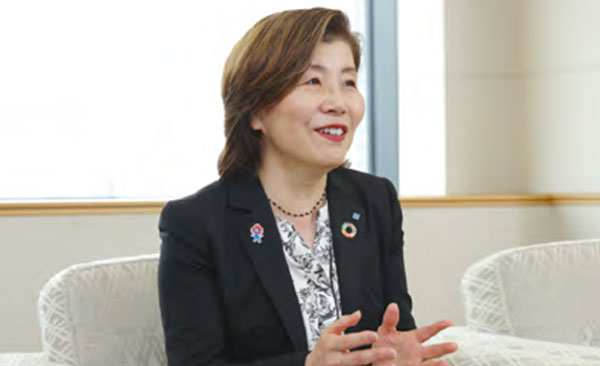
Fudaba
The year 2025 marks a turning point in our mid-term plan, and it is also the year we announced our Long-Term Corporate Strategy, “R.I.S.E. 2035”, with a view toward 2035. One of the key responsibilities of the Board of Directors in achieving these goals is progress tracking. While input from the front lines has been incorporated into the formulation of the long-term strategy, various challenges are expected during the execution phase. It is essential to continuously monitor whether employees at the operational level can truly take ownership and carry out the strategy as their own. Moreover, the world continues to change rapidly, even after a plan has been established. Given this reality, it is crucial to manage initiatives appropriately and adapt as needed. The closure of the U.S. tire plant and the acquisition of the DUNLOP brand are both foundational steps within the long-term strategy, and their progress must also be tracked carefully. It is essential that Directors and Auditors with diverse backgrounds and skill sets—both internal and external—collaborate effectively to make decisions that further enhance corporate value.
Sonoda
In the course of serving as an outside director, I sometimes find myself naturally adopting an internal perspective. However, it’s essential to always maintain an external viewpoint, keeping the interests of all stakeholders in mind. As the Company enters a major turning point, even when there is consensus on strategy and direction, having diverse perspectives—particularly on methodology and risk—can be highly valuable. That’s why, even if my views may be in the minority at times, I intend to speak up and contribute to the discussion with courage.
Motojima
With the long-term corporate strategy now providing a clear direction, I intend to closely monitor progress to ensure we do not veer off course. At the same time, I would like to support the executive team in taking necessary risks and embracing a mindset and actions geared toward growth. I also hope to expand dialogue with employees and officers as much as possible, and to accompany the process of deeply thinking through—and ultimately realizing—a truly sustainable business over the long term.